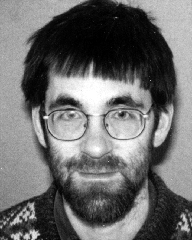Richard E. Borcherds 1998 Fields Medalist Richard E. Borcherds
1998 Fields Medalist Richard E. Borcherds

Richard E. Borcherds received a medal for his work in the fields of algebraand geometry, in particular for his proof of the so-called Moonshine conjecture. This conjecture was formulated at the end of the '70s by theBritish mathematicians John Conway and Simon Norton and presents twomathematical structures in such an unexpected relationship that the expertsgave it the name "Moonshine." In 1989, Borcherds was able to cast somemore light on the mathematical background of this topic and to produce a proof for the conjecture.
The Moonshine conjecture provides an interrelationship between the so-called"monster group" and elliptic functions. These functions are used in theconstruction of wire-frame structures in two-dimensions, and can be helpful,for example, in chemistry for the description of molecular structures.The monster group, in contrast, only seemed to be of importance in puremathematics. Groups are mathematical objects which can be used to describethe symmetry of structures. Expressed technically, they are a set of objectsfor which certain arithmetic rules apply (for example all whole numbers andtheir sums form a group.) An important theorem of algebra says that all groups,however large and complicated they may seem, all consist of the same components- in the same way as the material world is made up of atomic particles. The"monster group" is the largest "sporadic, finite, simple" group - and one ofthe most bizarre objects in algebra. It has more elements than there are elementary particles in the universe (approx. 8 x 1053). Hence the name "monster." In his proof, Borcherds uses many ideas of stringtheory - a surprisingly fruitful way of making theoretical physics usefulfor mathematical theory. Although still the subject of dispute among physicists, strings offer a way of explaining many of the puzzles surroundingthe origins of the universe. They were proposed in the search for a singleconsistent theory which brings together various partial theories of cosmology. Strings have a length but no other dimension and may be openstrings or closed loops.
Richard Ewen Borcherds (born 29 November 1959) has been "Royal SocietyResearch Professor" at the Department of Pure Mathematics and MathematicalStatistics at Cambridge University since 1996. Borcherds began his academiccareer at Trinity College, Cambridge before going as assistant professor tothe University of California in Berkeley. He has been made a Fellow of theRoyal Society, and has also held a professorship at Berkeley since 1993.
Welcome to the
Feature Column!
These web essays are designed for those who have already discovered the joys of mathematics as well as for those who may be uncomfortable with mathematics.
Read more . . .
Feature Column at a glance




